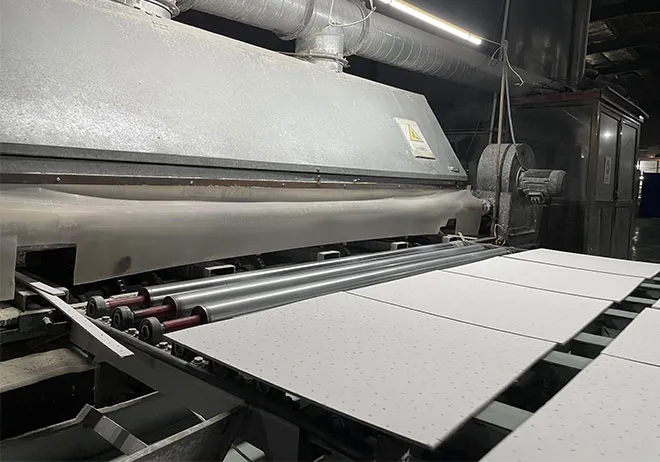Dec . 14, 2024 06:49 Back to list
ceiling t bar hangers
A Comprehensive Guide to Ceiling T-Bar Hangers
In the world of construction and interior design, ceiling T-bar hangers play a pivotal role in the installation of suspended ceilings. These essential components serve to support the grid system that holds ceiling tiles in place, ensuring stability and aesthetic appeal. This article delves into the various aspects of ceiling T-bar hangers, including their types, installation, benefits, and considerations for use.
Understanding T-Bar Hangers
T-bar hangers are part of a ceiling grid system, which is a popular choice for commercial and residential spaces alike. The grid comprises horizontal T-shaped components (the T-bars), which are suspended from the structural ceiling using hangers. These hangers, typically made from galvanized steel or other durable materials, ensure that the T-bar system remains level and securely supports the weight of the ceiling tiles.
Types of T-Bar Hangers
There are several types of T-bar hangers, each designed for specific applications and load requirements
1. Rod Hangers These are the most common type, typically consisting of a threaded rod that extends from the structural ceiling down to the T-bar. They provide excellent support and can be adjusted in height.
2. Wire Hangers Often used for lighter loads, wire hangers are flexible and easy to install. They are usually made from high-strength steel and can be woven through the T-bar for secure fastening.
3. One-Hole Straps These are metal straps that wrap around the T-bar and attach to the ceiling joists or beams. They are simpler to install but may not offer the same level of adjustability as rod hangers.
4. Two-Hole Straps Similar to one-hole straps, two-hole straps provide added support by using two attachment points. This enhances stability and is beneficial for heavier ceiling systems.
Installation Process
Installations of ceiling T-bar hangers require careful planning and execution to ensure the ceiling's integrity. Here’s a step-by-step guide to the installation process
1. Planning the Layout Measure and mark the location of the ceiling grid on the structural ceiling. It is vital to have a clear layout to avoid having to make adjustments later.
2. Attaching the Hangers Depending on the type used, install the hangers at the marked locations. For rod hangers, drill anchors into the ceiling and screw the rods in place. For wire hangers, the wires can be attached directly or with toggles.
3. Installing the Main Grid Once the hangers are secure, lay down the main T-bars into the hangers, ensuring they are level. Use a level tool to make necessary adjustments.
ceiling t bar hangers

4. Adding Cross T-Bars After the main grid is installed, add cross T-bars to form a grid for the ceiling tiles.
5. Installing Ceiling Tiles Finally, lay the ceiling tiles into the grid, ensuring a snug fit.
Benefits of Using T-Bar Hangers
There are numerous advantages to using T-bar hangers in ceiling installations
- Versatility T-bar hangers can adapt to various ceiling heights and configurations, making them suitable for a wide range of applications.
- Ease of Installation The simplicity of the installation process allows for quick setups and modifications, saving time and labor costs.
- Aesthetic Appeal Suspended ceilings offer a clean, modern look while allowing for easy access to plumbing, electrical, and HVAC systems hidden above.
- Acoustic Benefits Many T-bar ceilings can be paired with acoustic tiles, enhancing sound absorption and improving the auditory environment of a space.
Considerations for Use
While T-bar hangers are generally reliable, certain considerations should be kept in mind
- Weight Capacity Ensure that the hangers and grid system can support the intended weight of the tiles and any additional fixtures.
- Building Codes Always check local building codes and regulations to ensure compliance with safety standards.
- Material Quality Choose high-quality hangers that resist rust and corrosion, especially in environments with higher humidity.
In conclusion, ceiling T-bar hangers are an integral part of modern construction, providing a reliable and attractive solution for suspended ceilings. By understanding their types, installation processes, advantages, and considerations, builders and DIY enthusiasts can create beautiful spaces that are both functional and aesthetically pleasing. Whether for commercial applications or residential renovations, T-bar hangers are essential tools for achieving a professional finish in ceiling installations.
-
Quality Ceiling Trap Doors & Access Panels | Easy & Secure AccessNewsAug.30,2025
-
Durable Ceiling T Grid Systems | Easy InstallationNewsAug.29,2025
-
PVC Gypsum Ceiling: Durable, Laminated Tiles for Modern SpacesNewsAug.28,2025
-
Pvc Gypsum Ceiling Is DurableNewsAug.21,2025
-
Mineral Fiber Board Is DurableNewsAug.21,2025
-
Ceiling Tile Clip Reusable DesignNewsAug.21,2025







